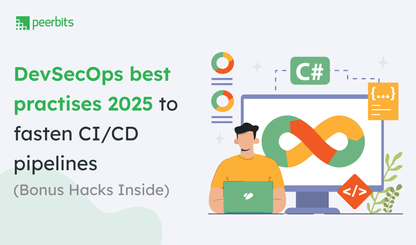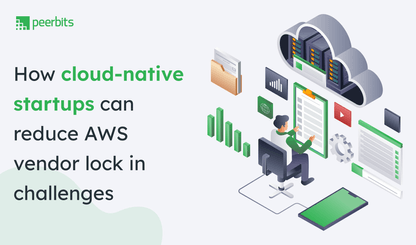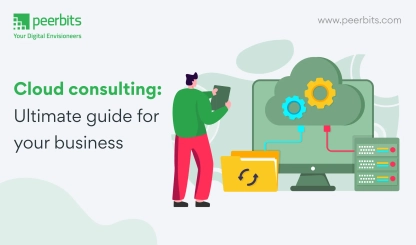As AI continues to take over repetitive tasks, the need for innovation has become more crucial. Companies that can launch new products or services quickly gain a clear advantage in a market that does not wait.
To achieve that speed, businesses need more than just good ideas. They need the right foundation to build and release faster. Serverless architecture helps teams move quicker by reducing infrastructure management, offering better scalability, and improving cost control.
Recent research by Global Market Insights Inc. shows that the serverless architecture market is expected to cross USD 90 billion by 2032. This growing adoption reflects how vital it has become for businesses focused on speed and innovation.
In this blog, we’ll look at how serverless architecture shortens time-to-market, supports innovation, and what challenges companies should prepare for during adoption.
How serverless architecture works ?
Despite the name, serverless architecture still runs on servers. The difference lies in who manages them. Instead of your team manually handling infrastructure, cloud service providers take care of provisioning and scaling. This let your developers focus more on writing and deploying code, not managing servers.
In the architecture of serverless computing, applications are broken into small, stateless functions that execute in response to events like HTTP requests, database changes, or cloud service triggers. This event-driven model simplifies scaling and reduces operational overhead.
When applied in a DevOps environment, this structure becomes even more effective. DevOps serverless architecture combines automation, CI/CD practices, and cloud-native tools to reduce deployment friction and support faster, more reliable releases.
These benefits of serverless architecture give teams more room to innovate, shorten delivery cycles, and spend fewer resources on infrastructure concerns.
So what’s next? You will explore how these advantages directly support product growth and business agility.
Key benefits of serverless architecture that reduce time-to-market
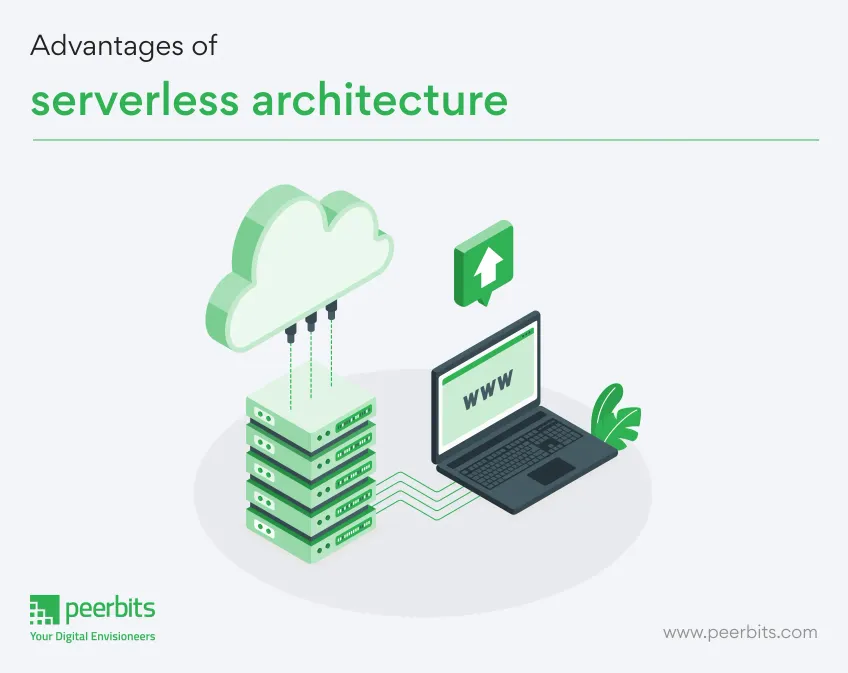
Though serverless architecture has laid the foundation for many advantages in modern systems, the ones that promote innovation & accelerate time-to-market in business are as follows:
1. Faster development cycles
Traditionally, developers had to spend a significant amount of time setting up, maintaining, and scaling servers, which used to be a major slowing-down factor for the development cycle. However serverless architecture revolutionizes this by removing the need for server provisioning and management tasks.
Such tasks go under cloud service providers, allowing developers to focus only on the core functionalities and business logic. For example, when using AWS Lambda, developers can write and deploy code directly without worrying about the underlying infrastructure. This leads to a significant reduction in the duration of development and enhances the time to market for new features and products.
2. Improved scalability
One of the standout features that many endorse serverless architecture for innovation is its ability to scale resources based on demand automatically. In simple terms, it states whether there are a few users or millions, your infrastructure will dynamically adjust to handle the load without any manual intervention.
This feature is essential for businesses that regularly face fluctuating traffic, such as e-commerce sites during peak shopping seasons or media platforms during viral events.
Additionally, serverless architectures are also budget-friendly as many cloud providers offer a pay-for-what-you-use model where businesses can manage their investment based on their changing system.
3. Increased developer productivity
Serverless architecture also helps in increasing developer’s productivity by eliminating the complexities related to infrastructure management. Rather than dealing with server configurations and scaling issues, your developers can keep their innovative juices flowing and focus on building new features.
The development process in serverless architecture also allows teams to quickly prototype and iterate on new ideas, leading to faster innovation cycles. Features like event-driven architectures and serverless APIs empower businesses with applications that automatically respond to specific events like- User actions or system changes, without needing to write extensive backend code. These capabilities make sure that innovative ideas can be tested and refined quickly.
4. Enhanced innovation culture
Serverless architecture promotes a culture of experimentation and risk-taking within organizations. Your developers & operations team are not under the constant stress of deploying & re-writing codes for all news ideas. They can maintain rapid testing and faster deployment in a serverless architecture without the fear of long development cycles or high infrastructure costs.
This culture of innovation is highly necessary for businesses that want to stay ahead in a competitive market. Your firm can launch new features, gather user feedback, and make necessary adjustments in a fraction of the time that might have taken days or months in traditional infrastructure. This business agility allows you to respond to market trends and customer needs more effectively, maintaining continuous innovation.
Also read: Explore the latest trends in SaaS Application Architecture Design
Case studies: Real-world examples of serverless innovation
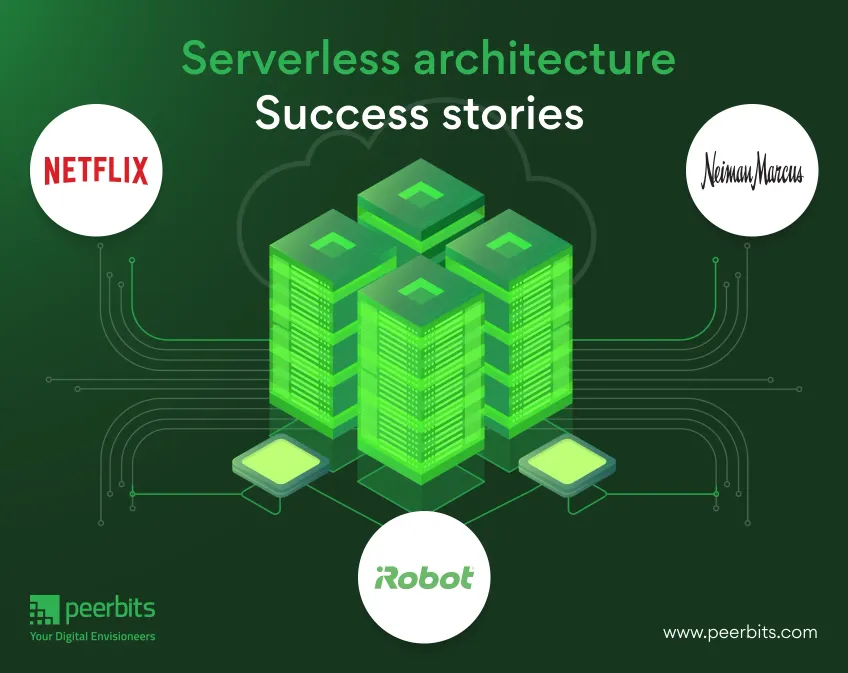
Serverless architecture is a transformative approach in cloud computing. For more reliability & analysis here are three recent case studies that demonstrate the significant benefits of serverless architecture, supported by data from reliable sources encouraging innovation in those businesses.
Case Study 1: Netflix
Netflix, now who needs an introduction to that? A global streaming giant and everyone’s daily binge partner is utilizing AWS serverless services to enhance their streaming services and operational efficiency.
Key benefits
-
Rapid deployment: AWS allows Netflix to deploy thousands of servers and terabytes of storage within minutes, ensuring quick scalability and efficient service delivery.
-
Enhanced personalization: Utilising AWS's powerful machine learning capabilities Netflix can provide more personalized content suggestions. Now you know how Netflix guesses your mood-based movie correctly!
-
Global expansion: With AWS's global infrastructure, Netflix can comfortably enter new territories, reaching a larger audience while assuring consistent content delivery with its stable serverless architectures.
Netflix's adoption of AWS's serverless architecture has provided them the ability to rapidly scale their infrastructure, enhance personalization, and improve streaming performance. This is the secret behind Netflix’s unbeatable excellence in the global streaming market.
Case-study 2: Neiman Marcus
Neiman Marcus is a highly popular American retail store, that sells luxury apparel, accessories, jewelry, beauty, and decorative home products. They adopted serverless architecture to enhance their application development and deployment processes.
Key benefits
-
Increased speed-to-market: A massive brand like Neiman Marcus was able to enhance their speed to market by at least 50%, allowing for more agile development with serverless and rapid deployment of updates.
-
Reduced app-building costs: The adoption of serverless architecture significantly reduced the costs associated with building applications, providing more financial flexibility for innovation in the brand.
Altogether, Neiman Marcus was able to accelerate their development cycles and reduce costs, which ultimately allowed them to respond more quickly to market demands and customer needs.
Case-study 3: iRobot
iRobot, a leading American consumer robot company, utilized AWS Lambda and AWS IoT services to create a serverless backend for their IoT platform.
Key benefits:
-
Faster innovation: The serverless backend helped iRobot to innovate faster as they were able to focus more on customer-centric features and improvements rather than sustaining stability in their infrastructures.
-
Operational efficiency: During sudden peak demands on holidays or special offers, iRobot company was able to maintain operational efficiency while scaling their IoT platform through serverless architecture.
iRobot was able to streamline its development processes and focus on delivering high-quality, innovative products to its customers without worrying about managing infrastructure during peak seasons through the use of serverless architecture.
Also read: Top Challenges Faced During DevOps Implementation and How to Overcome Them
Challenges in serverless computing
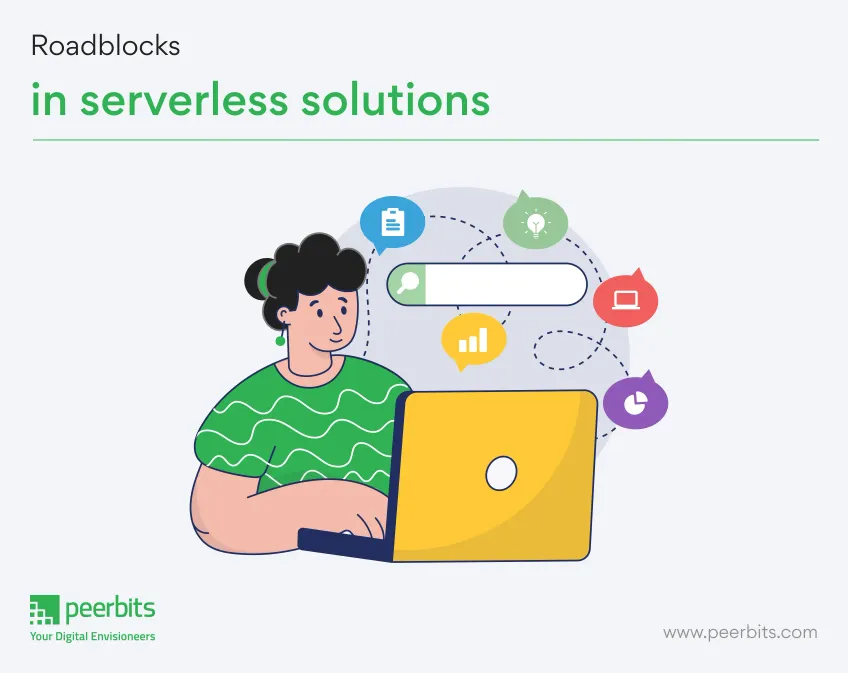
Much like any new technology, serverless computing also possesses some set of challenges that any business should know, for smoother navigation and DevOps planning.
1. Vendor lock-in
While adopting serverless architectures vendor lock-in is one of the most common challenges businesses encounter. As each cloud provider has its own set of serverless offerings, therefore if you feel the need to switch vendors then migrating from one to another requires major code changes making it difficult for businesses.
2. Cold start performance
Serverless functions executing over response to an event might face a delay termed a "cold start." It happens when a function is cited for the first time or it hasn't been cited for a certain period. This issue majorly impacts the responsiveness of applications. Worry not as there are various techniques, such as pre-warming functions or implementing hybrid approaches, that can save you from the cold start in a serverless architecture.
3. Debugging and testing
Since serverless architecture is distributed and event-driven, debugging and testing become challenging for some cloud providers. Hence it is advised to adopt new debugging and testing practices that are specifically designed for serverless architectures, using all the logging and monitoring tools provided by cloud providers.
Future trends in serverless architecture
With the increasing popularity of serverless computing & architecture among developers and organizations, various ongoing advancements are also being made to eliminate any further challenges of serverless architecture.
1. Serverless containers and MicroVMs:
Traditional serverless or current serverless functions experience a ‘cold start’ aka a slight delay upon initial execution. This new approach with MicroVMs offers pre-warmed environments for functions, reducing cold start times and improving performance for latency-sensitive applications.
2. Serverless Machine Learning (Serverless ML):
Serverless ML are future-proof innovation that allows developers to train and deploy machine learning models without managing infrastructure. This AI-driven trend in serverless architecture streamlines the process and makes ML development more accessible.
3. Hybrid and multi-cloud serverless:
Since various businesses felt the need for multiple cloud providers, therefore serverless solutions are evolving to support a hybrid or multi-cloud environment. It serves businesses to choose the best DevOps service provider for specific workloads and avoid vendor lock-in.
Peerbits: Join the serverless revolution with us
Are you ready to get faster development and innovation with serverless? Well here’s a checklist, if you’ve just started your serverless computing journey:
-
Evaluate your development to identify areas for improvement. Check if your deployments are slow. Does your infrastructure take too long to respond?
-
Find serverless applications that benefit from flexibility.
-
Choose a reliable cloud provider option like AWS Lambda based on integration, tools, and pricing.
However, to get a complete lookout from consultation to implementation Peerbits can help you out! Our team of serverless architecture experts are highly certified professionals in Devops & cloud technology.
They can make adopting serverless architecture a smooth transition with maximized innovation. So go serverless with our top DevOps services and unlock your innovation potential now!
Conclusion
As we’ve seen, the benefits of serverless architecture go beyond infrastructure simplicity. It supports faster development cycles, reduces operational overhead, and creates room for teams to focus on building and launching innovative products. This shift in focus is what gives businesses a real edge in competitive markets.
But making the move to serverless and doing it right requires more than just choosing the right tools. It calls for a clear strategy, well-structured architecture, and reliable integration with your existing cloud workflows. That’s where the right partner can make a difference.
At Peerbits, our AWS consulting services are built to help you make that shift with confidence. Whether you're starting from scratch or optimizing an existing setup, we bring the technical expertise and business insight needed to shape serverless solutions that support long-term growth.
Let’s work together to simplify your infrastructure, accelerate your releases, and drive the innovation your business is aiming for.


